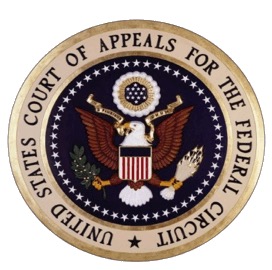Federal Circuit rejects district court’s overly narrow claim construction in LED patent infringement case
“Reading the claims of the ‘961 patent, the Federal Circuit noted that the claim language did not require the claimed reflective layers to be epitaxial.”
On October 16, the U.S. Court of Appeals for the Federal Circuit issued a ruling in CAO Lighting, Inc. v. Feit Electric Co., Ltd. vacating a summary judgment entered by the Central District of California that found Feit Electric did not infringe semiconductor light source patent claims asserted by CAO Lighting. In so ruling, the Federal Circuit found that the district court erred in construing the claim term “first reflective layer,” and in requiring that the claimed first reflective layer be composed of a different material than the substrate upon which the layer is deposited.
CAFC Not Compelled to Limit Broad Claim Term by Narrow Limitation in Separate Claim
In June 2020, CAO Lighting filed a patent infringement suit in Central California district court asserting claims from U.S. Patent No. The Semiconductor Light source Using a Multiple Panel Heat Sink Patent No. 6465961 was filed in Central California district court on June 2020. The patent ‘961 claims a semiconductor for lighting a space and efficiently dissipating the heat. It relates to Light Emitting Diode technology. The district court conducted a Markman hearing in September 2021 in which the court construed the claim term “reflective layers” as “distinct layers of material that reflect light emitted by said active layer.”
Following Markman, Feit Electric moved for summary judgment of noninfringement, arguing that CAO Lighting identified a boundary between layers as the first reflective layer and not a distinct layer of material. Feit Electric countered by arguing that the patent ‘961 claimed the substrate and the first reflective layer as separate limitations. The district court granted Feit Electric summary judgment after ordering supplemental briefing regarding the construction of epitaxial layers or crystalline layers formed on top of another layer that determines the orientation of the formed layer. This was because the first reflective and substrate in the accused products are not made of different materials. The Federal Circuit, after reading the claims of the patent ‘961, noted that the claim language didn’t require the claimed reflective layer to be epitaxial. The canceled claim 7, the independent claim that CAO Lighting relies on, specifically mentions an epitaxial coating, while claim 8 of ‘961 refers to reflective surfaces. Citing to its 2014 ruling in Ancora Technologies v. Apple, the Federal Circuit declined to limit the broader term from claim 8 by the narrower interpretation contained within claim 7.
Case Remanded So Parties Can Address Infringement Under Proper Claim Construction
Feit Electric contended that the ‘961 patent only mentions reflective layers in the context of a vertical-cavity surface-emitting laser (VCSEL). The ‘961 specification describes the reflective layer of a vertical-cavity surface-emitting laser (VCSEL) as epitaxial. However, the Federal Circuit cited a number of cases, including Williamson V. Citrix, (2015), to support the premise that claims are not limited to the preferred embodiments in the specification, unless the inventor explicitly states that the specification has the same scope as the claims. Because no such clear language existed in the specification, the Federal Circuit concluded that the claimed first reflective layer need not be epitaxial.
The Federal Circuit’s correction of the district court’s claim construction also led the appellate court to reverse the lower court’s finding that the first reflective layer and substrate must be composed of different materials. The district court reached this conclusion because claim 7 required that a buffer layer be used to mitigate differences in material properties of the substrate and epitaxial layer. However, because the Federal Circuit concluded that the claimed reflective layers need not be epitaxial, the “other epitaxial layers” of claim 7 did not encompass the reflective layers of claim 8 such that the first reflective layer was required to be composed of a different material than the sapphire substrate.
Finally, the Federal Circuit nixed Feit Electric’s arguments that the district court’s summary judgment ruling could be affirmed on other grounds. Feit Electric’s argument that the patterned surface must be epitaxial in order to meet the first reflective layer was overturned by the appellate court on claim construction. The Federal Circuit noted, however, that Feit Electric’s argument stating that the first reflector layer and substrate cannot be the exact same component was contained in two different claims. The Federal Circuit remanded the issue back to the district courts to allow both parties to address it properly.
Steve Brachmann graduated from the University at Buffalo School of Law in May 2022, earning his Juris Doctor. He served as the president of the Intellectual






